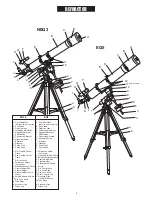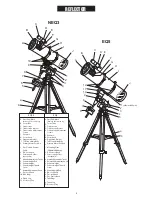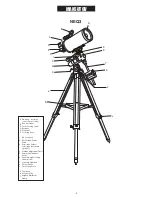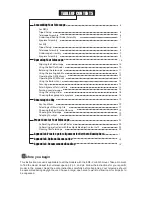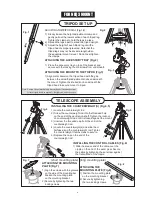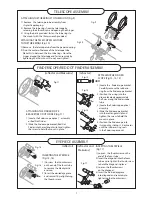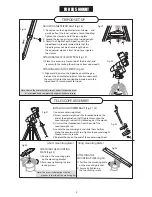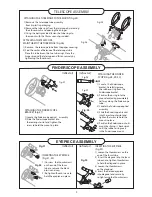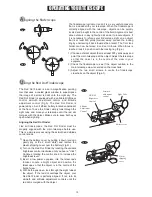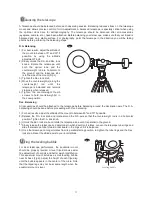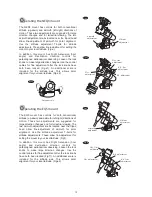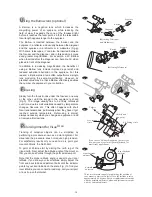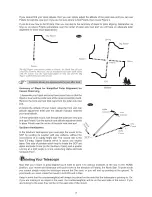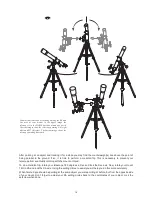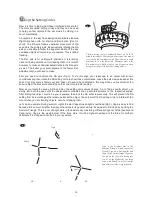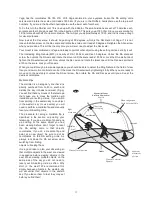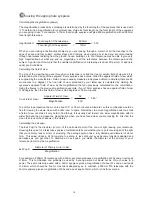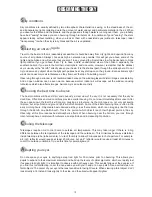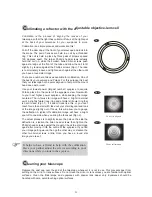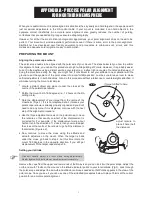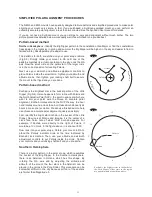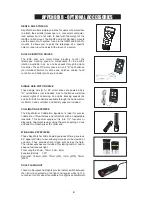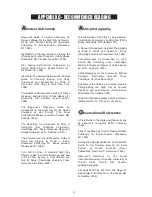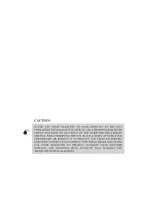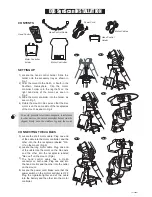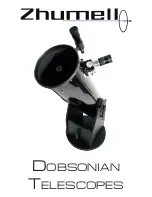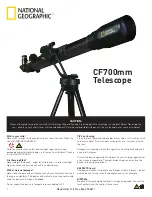
13
F
ocusing
P
olar Alignment for Visual Use
Fig.h
Fig.i
Fig.j
Slowly turn the focus knobs under the focuser, one way
or the other, until the image in the eyepiece is sharp
(Fig.h). The image usually has to be finely refocused
over time, due to small variations caused by temperature
changes, flexures, etc. This often happens with short
focal ratio telescopes, particularly when they haven't yet
reached outside temperature. Refocusing is almost
always necessary when you change an eyepiece or add
or remove a Barlow lens.
Tracking of celestial objects can be simplified by
performing a procedure known as a polar alignment. For
visual use the procedure does not require high precision.
For satisfactory results all you need to do is point your
mount at Polaris, the North Star.
To point at Polaris, start by aiming the north leg of the
tripod north. Next, adjust the altitude angle of the mount so
that you can see Polaris through the polar axis view port.
Note that the proper altitude angle is equal to your local
latitude. If you know your local latitude simply adjust the
front and back latitude adjustment bolts until the indicator
points to your local latitude on the scale. Fig. j. To find your
local latitude you can consult a road map, call your airport,
or look it up on the Internet.
Fig.g
U
sing the Barlow lens (optional)
A Barlow is a negative lens which increases the
magnifying power of an eyepiece, while reducing the
field of view. It expands the cone of the focussed light
before it reaches the focal point, so that the telescope's
focal length appears longer to the eyepiece.
The Barlow is inserted between the focuser and the
eyepiece in a reflector, and usually between the diagonal
and the eyepiece in a refractor or a maksutov (Fig.g).
With some telescopes, it can also be inserted between
the focuser and the diagonal, and in this position it gives
even greater magnification. For example, a 2X Barlow
when inserted after the diagonal can become 3X when
placed in front of the diagonal.
In addition to increasing magnification, the benefits of
using a Barlow lens include improved eye relief, and
reduced spherical aberration in the eyepiece. For this
reason, a Barlow plus a lens often outperforms a single
lens producing the same magnification. However, its
greatest value may be that a Barlow effectively doubles
the number of eyepieces in your collection.
Barlow
Diagonal
Eyepiece
(Refracting Telescopes
and Maksutovs)
(Reflecting Telescopes)
Barlow
Eyepiece
Polaris
R.A Setting circle
Dec. setting
circle
If you can see Polaris through your polar scope
view port, you are polar aligned sufficiently for
most visual applications.
These are the main controls for adjusting the position of
your mount to aim it at Polaris. Here, the latitude is set to
approximately 40 degrees. East/west adjustments are made
with the Azimuth adjusters.Up/down adjustments are made
with the Latitude adjusters.
0 10 20
30
40
50
60
70
80
90
Front Latitude
adjuster
Rear Latitude
adjuster
Azimuth
adjusters
Polaris axis
view point
Summary of Contents for EQ5
Page 1: ...INSTRUCTION MANUAL Telescopes with NEQ3 EQ5 Mount 031007V3 ...
Page 14: ......
Page 27: ......
Page 29: ...INSTRUCTION MANUAL SynScan TM 140303V4 Copyright Sky Watcher ...
Page 51: ...SynScan TM ...


